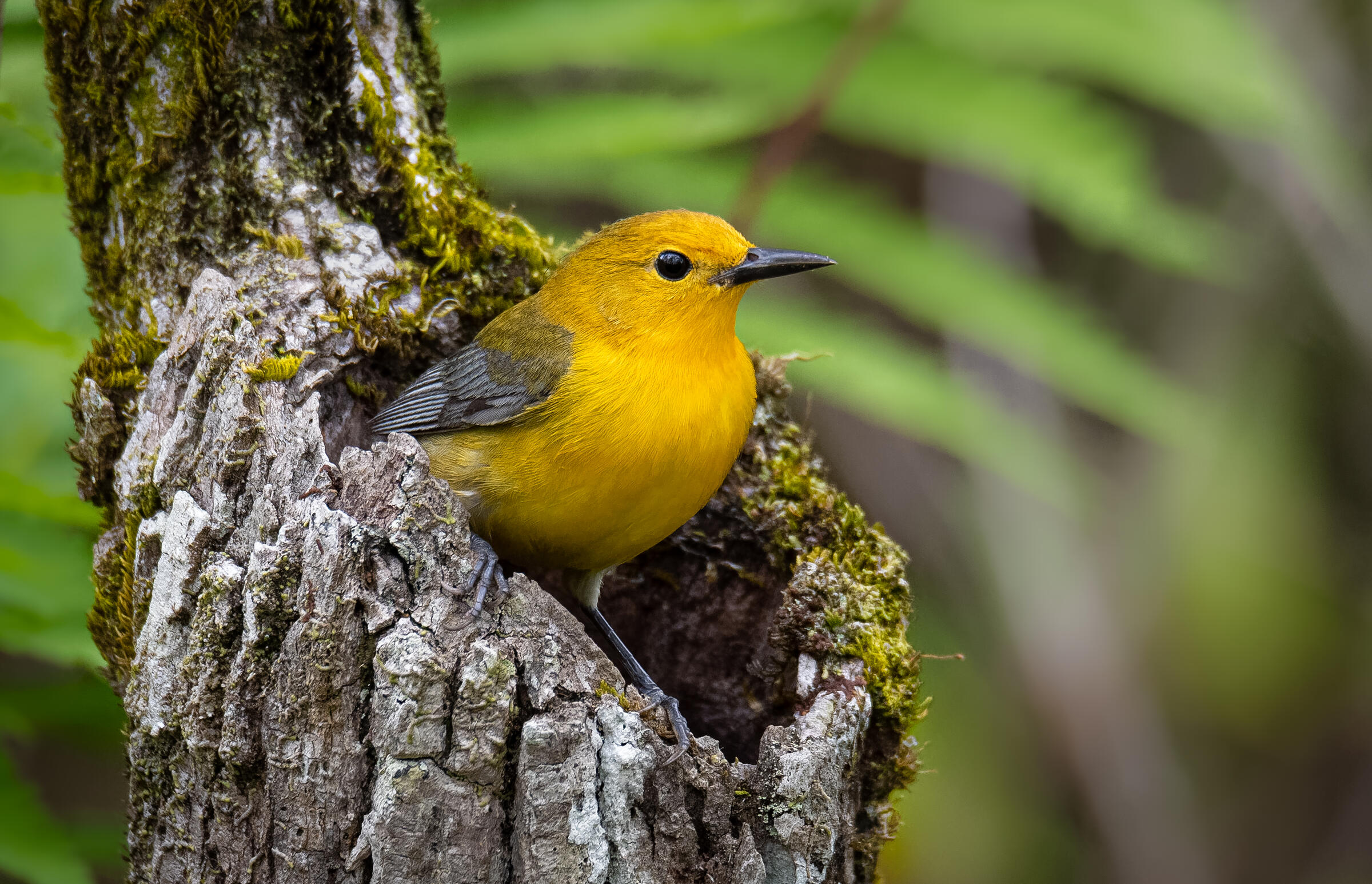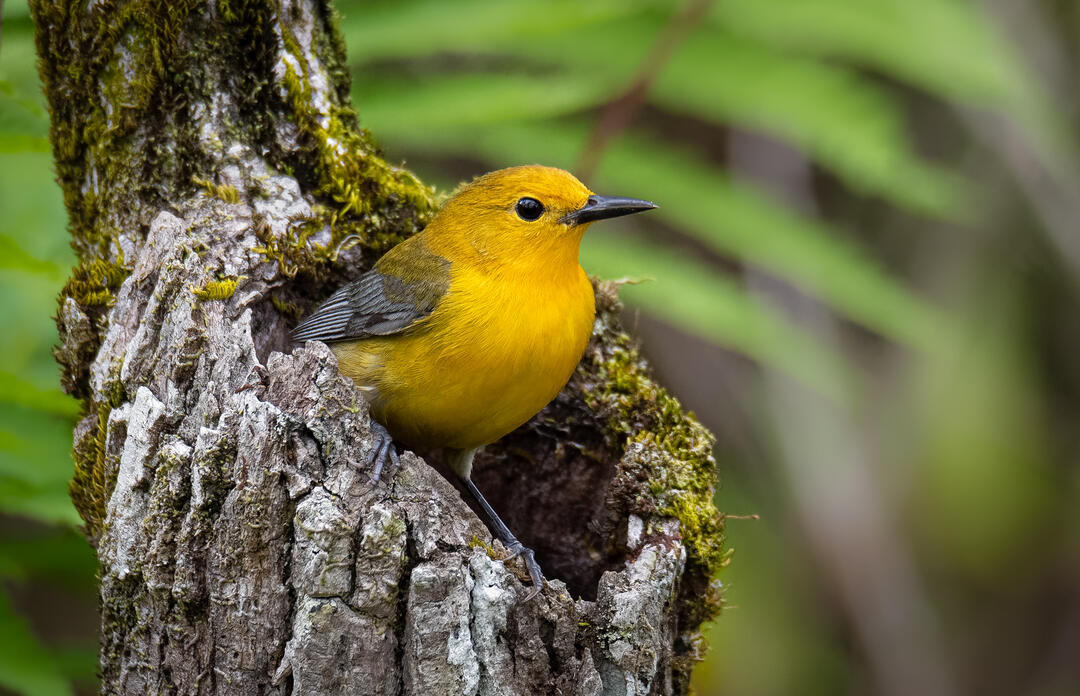Urban forests include the trees at your local park and in your backyard, the forest stands on the side of the road, and everything in between—that’s why we want to engage people at all levels to help ensure urban forests benefit the greatest number of birds and people.
From small patches of trees in your yard to the dense forest cover along a creek bed, each tree stand has its own management requirements and hosts specific species of birds at different times throughout the year.
The guides and resources below will help you advocate for bird-friendly urban forestry polices and make the most of your land for birds and other wildlife.
At your Local Government
One of the most effective ways you can protect and increase tree canopy in your community is by passing local tree conservation policies.
The first step is to organize, and a good place to start is by connecting with your local Audubon chapter.
Understanding your city’s laws governing trees and urban forest is another important step, and will help determine what kind of policy changes might be beneficial. Start by seeing if you can locate the local tree ordinance code via the municipal website or by searching Municode or American Legal Publishing. Tree law may be found in the “Parks and Recreation” or “Environment” sections, if there is not a specific “Tree Ordinance” section. Your municipality might also have a separate “Universal Development Code” or UDO that states what developers are and are not allowed to do with trees during a project.
Here are examples of urban forestry policies passed by local governments:
-
Brunswick County submits tree regulation resolution to state legislature.
-
Raleigh City Council aproved the creation of a tree conservation plan.
-
Gov. Cooper's Executive Order to plant 1 million trees in urban settings by 2040.
-
How Audubon North Carolina members and chapters advocated for Native Plants at the NC Legislature.
You can also get involved by joining a local advisory board or commission for your local government that covers tree canopy, land use, or environmental issues. Don't have a tree board in your community? Get organizing and ask your local goverment to create one.
Looking for more resources on local urban forestry standards and policies? Check out our friends at the Sustainable Forestry Initiative.
If you have specific questions about how to connect with your local chapter or start working on urban forestry in your community, contact Urban Forestry Program Manager Hannah Pursely at hannah.pursley@audubon.org.
For Practitioners
If you are a municipal arborist, urban forester, a local nonprofit, or anything in-between, there are ways to help tweak your methods to be more bird-friendly.
Use our NC Forest Decision Support Toolkit to measure canopy cover in your area, compare local trends with state averages, and see how your area has changed over time. You can also use it to get a better idea of how climate change has or will impact certain forested areas and where forests are in relation to low-income or communities of color. Important Bird Areas are also indicated in the tool so you can see what management actions might have the most impact. This data is updated regularly and can be used to support local advocacy efforts.
If you’re a forester or local decisionmaker interested in staying up to date on events, advocacy efforts, and collaboration opportunities, sign up for our monthly Audubon North Carolina Urban Forestry Network Call here.
At Home
Native trees for more birds
One of the easiest ways to improve your urban forest at home is to plant native trees. Birds have adapted to the resources provided by native trees, especially the insects they host, which are a key food source for growing chicks.
Native trees will be more hardy, more likely to survive in our climate and soil, require less water and fertilizer than ornamental species, and improve your backyard ecosystem for all manner of wildlife. Find native trees for your yard:
-
Recommended Native Species, NC Native Plant Society
-
Native Trees that Attract Wildlife, Gardenia
-
Search Native Plants. NC State Extension
-
Bird-friendly Native Plants, Audubon North Carolina
Birds love habitat structure variety
Having a diversity of growth structures and heights will also benefit birds. Some birds forage in the canopy, while others find food and nest on the forest floor. Different species depend on different layers of the forest throughout their lifecycle.
For example, the Eastern Pheobe prefers the low branches of trees to perch and fly out to catch insects, while the American Robin is a ground forager but may roost in treetops.
Having several layers of tree species that grow in different patterns and heights attracts more birds. Learn how to incorporate habitat layers in your yard:
-
Case Study: Studying Relationships Between Forest Structure and Bird Biodiversity, National Science Foundation
-
Design Your Landscape to Attract Birds, Hicks Nurseries
-
Landscaping for Birds, Sacajawea Audubon Society
-
How to Make Your Yard Bird-Friendly, National Audubon Society
How you can help, right now
Donate to Audubon
Help secure the future for birds at risk from climate change, habitat loss and other threats. Your support will power our science, education, advocacy and on-the-ground conservation efforts.
Sign Up For Our eNewsletter
Keep up-to-date on all that happens with Audubon North Carolina's research, events and volunteer opportunities.





